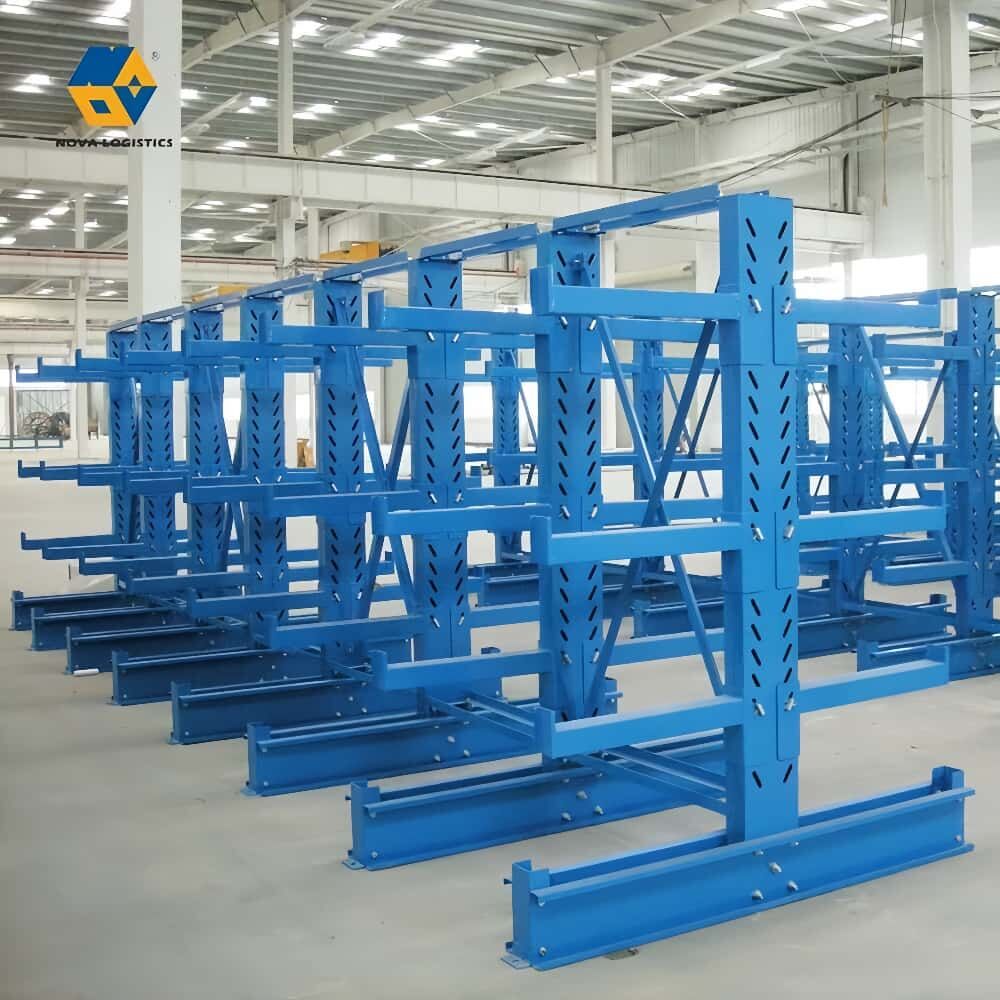Maximizing Warehouse Efficiency Through Strategic Storage Solutions
Modern warehouses face an ever-growing challenge of maximizing their available space while maintaining operational efficiency. Industrial racks have emerged as the cornerstone of effective warehouse management, offering versatile storage solutions that transform vertical space into valuable real estate. By implementing the right racking systems, businesses can dramatically increase their storage capacity, improve inventory management, and streamline their operations.
The strategic implementation of industrial racks goes beyond simply installing metal shelving. It involves careful planning, understanding of workflow patterns, and consideration of future growth needs. When properly executed, an optimized racking system can increase storage capacity by up to 40% while simultaneously improving picking efficiency and reducing operating costs.
Understanding Industrial Rack Types and Applications
Selective Pallet Racking Systems
Selective pallet racking represents the most commonly used industrial racks in warehouses worldwide. These systems offer direct access to all pallets, making them ideal for warehouses with high SKU variety and frequent inventory turnover. The versatility of selective racking allows for easy adjustment of beam levels and accommodation of different pallet sizes.
Modern selective industrial racks feature advanced safety features, including impact-resistant frames and load indicators. Their modular design enables warehouse managers to reconfigure layouts as needs change, providing long-term flexibility for growing operations.
Drive-In and Drive-Through Racking
For high-density storage requirements, drive-in and drive-through industrial racks offer maximum space utilization. These systems eliminate multiple aisles by allowing forklifts to enter the rack structure directly. While sacrificing some selectivity, these systems can increase storage density by up to 75% compared to selective racking.
Drive-in racks are particularly effective for bulk storage of homogeneous products with longer storage periods. The LIFO (Last In, First Out) or FIFO (First In, First Out) configurations provide options for different inventory management strategies.
Design Considerations for Industrial Rack Implementation
Load Capacity and Safety Requirements
The foundation of any successful racking system lies in proper load capacity planning. Industrial racks must be designed to handle not only current storage needs but also anticipate future requirements. Engineers must calculate point loads, beam capacities, and overall system stability to ensure safe operation.
Modern industrial racks incorporate advanced safety features such as wire decking, column protectors, and seismic ratings. These elements work together to create a robust storage system that meets or exceeds local building codes and safety regulations.
Space Optimization Strategies
Maximizing vertical space utilization begins with careful analysis of building dimensions, including clear height and floor loading capacity. Industrial racks should be configured to optimize cubic storage volume while maintaining necessary aisle widths for equipment operation.
Advanced warehouse management systems can help determine optimal rack configurations based on product dimensions, turnover rates, and picking patterns. The integration of these systems with industrial racks creates a synchronized operation that maximizes both space and efficiency.
Implementation and Maintenance Best Practices
Professional Installation Guidelines
Proper installation of industrial racks is crucial for both safety and functionality. Professional installers should follow manufacturer specifications precisely, ensuring proper alignment, anchoring, and leveling. This attention to detail during installation prevents future problems and extends the system's operational life.
Regular inspection and maintenance protocols must be established from day one. This includes scheduled checks of rack integrity, immediate repair of any damage, and documentation of all maintenance activities.
Staff Training and Safety Protocols
Employee training is essential for maximizing the benefits of industrial racks while maintaining a safe working environment. Staff should understand proper loading procedures, weight limitations, and damage reporting protocols. Regular safety refresher courses help maintain awareness and prevent accidents.
Implementing clear safety protocols, including regular inspection schedules and reporting procedures, ensures long-term success of the racking system. Documentation of these procedures should be readily available and regularly updated.
Future Trends in Industrial Racking Systems
Automation and Smart Storage Solutions
The future of industrial racks lies in their integration with automated systems. Automated storage and retrieval systems (AS/RS) are becoming increasingly common, working in conjunction with traditional racking to improve efficiency and accuracy. These systems can significantly reduce labor costs while increasing storage density.
Smart sensors and IoT devices are being incorporated into modern industrial racks, providing real-time monitoring of rack conditions, load weights, and usage patterns. This data helps optimize storage strategies and predict maintenance needs before problems occur.
Sustainable and Adaptable Design
Environmental considerations are driving innovations in industrial rack design. Manufacturers are developing more sustainable materials and production methods, while maintaining the strength and durability required for heavy-duty applications. Energy-efficient lighting and climate control systems are being integrated into racking designs to reduce operational costs.
Adaptable designs allow for easy reconfiguration as business needs change. Modular components and standardized connections make it possible to modify or expand systems without complete replacement, providing long-term cost benefits.
Frequently Asked Questions
What factors should I consider when choosing industrial racks for my warehouse?
Consider your storage requirements, product characteristics, handling equipment, building specifications, and future growth plans. Also evaluate factors such as load capacity, accessibility needs, and inventory turnover patterns to select the most appropriate racking system.
How often should industrial racks be inspected for safety?
Regular inspections should be conducted at least quarterly, with daily visual checks by operators. Professional safety audits should be performed annually or after any significant impact or modification to the racking system.
What are the most common causes of industrial rack damage?
The most frequent causes include forklift impacts, overloading, improper installation, and inadequate maintenance. Preventing these issues through proper training, regular inspections, and immediate repairs can significantly extend the life of your racking system.

